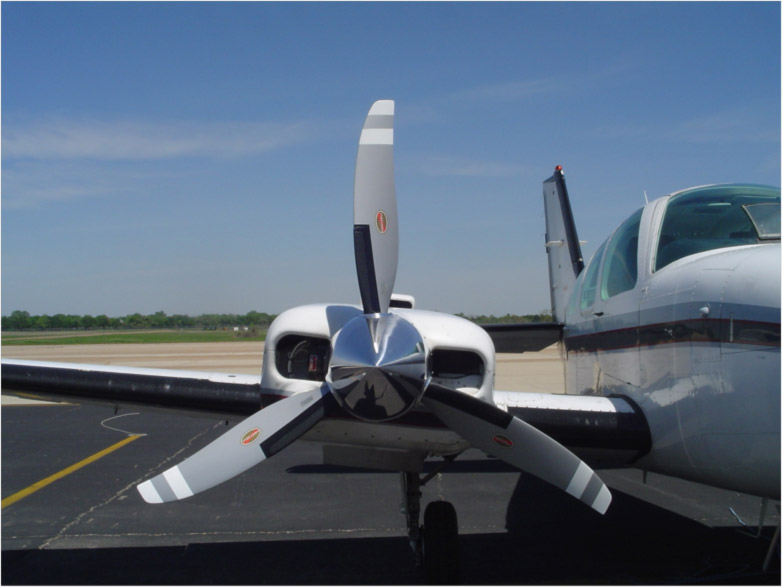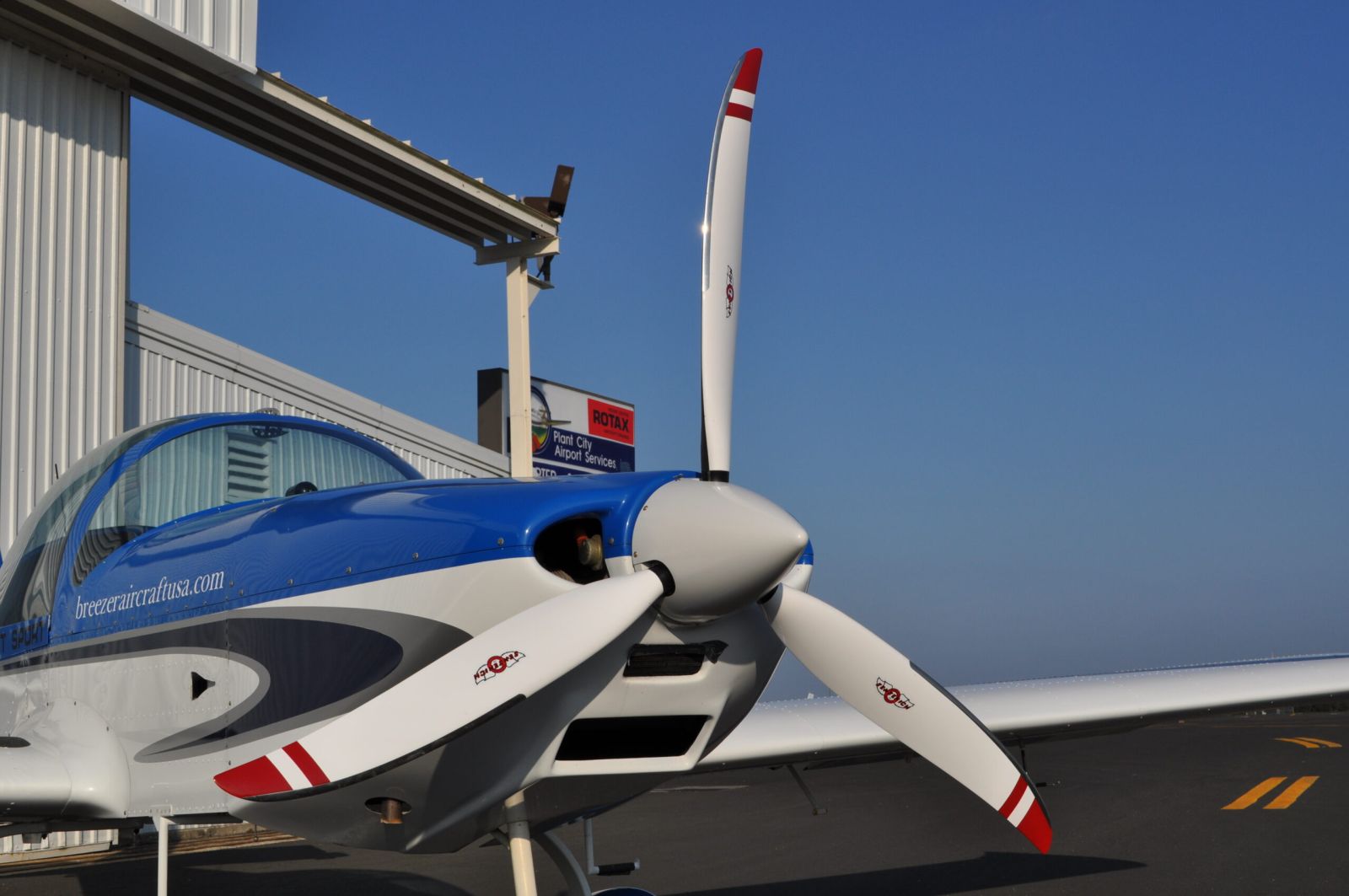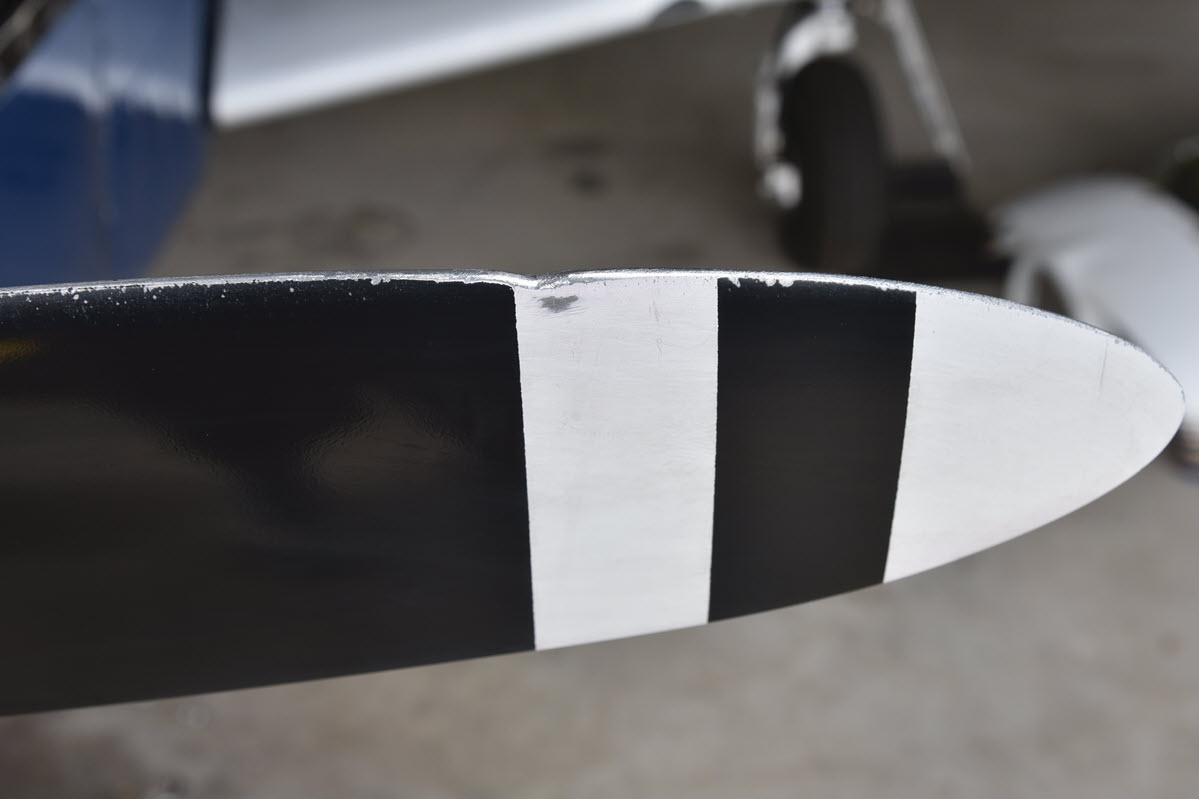


Quoting a headline "Aluminum Propeller Blades : Prevent Fractures with Proper Inspections and Maintenance", NTSB today has issued an aviation Safety Alert on properly inspecting and maintaining aluminum propeller blades.
The National Transportation Safety Board (NTSB), an independent U.S. government investigative agency, has said in the safety alert that propeller blades made up of Aluminum alloys have the risk of fatigue cracking and fracture ,if not traced and rectified in an early stage, the alert report said,
"Aluminum propeller blades can be susceptible to fatigue cracking and fracture if a small nick, pit, or corrosion on the surface or edge is not found and repaired during preflight inspection or maintenance. Such damage can concentrate stress from normal airplane operation loads, resulting in fatigue crack initiation and growth followed by propeller blade fracture."
At present, Aluminum is more commonly used for airplane propeller blades than composite propeller blades or wood, and Fatigue cracking and fracture of an Aluminium propeller blade can lead to airframe and engine damage and a possible loss of control.
NTSB adds further ,
Airplanes that are used for aerial application and coastal operations may be at higher risk for propeller blade damage because they can be exposed to chemicals or salt-laden moisture, which can cause corrosion that leads to a propeller blade fracture from fatigue cracking.
Any airplane operating on an unimproved or backcountry airstrip is also at high risk for propeller blade damage because loose rocks, gravel, or debris on unimproved airstrips can create small nicks on aluminum propeller blades that can turn into large fatigue cracks.
Not adhering to manufacturer-recommended overhaul schedules for aluminum propeller blades can lead to undetected fatigue cracks and blade separation.
The NTSB published three examples from the list of investigations done by them, where a failure to properly inspect and repair small damage to aluminum propeller blades resulted in propeller blade fatigue cracking and fractures, and the examples are as below :
In the first case, the left-side Hartzell aluminum propeller blade of a Beech 58 separated from the airplane in flight; the pilot was able to land the airplane at the nearest airport.
NTSB's Post incident examination of the propeller blade fracture surface revealed signatures consistent with high-cycle fatigue.
As per NTSB, It is likely that damage associated with the fatigue fracture origin was present during the last 100-hour maintenance inspection, about 28 flight hours before the incident, and during the subsequent preflight inspections, though the presence of black paint covering damage in the fatigue origin area could have made it more difficult to detect.
Though obscured by paint, the defect would have been detectable with careful visual inspection, which should have prompted further inspection and repair. (CEN22LA250) .
In the second case, During the pilot’s takeoff on a personal flight, a portion of the airplane’s McCauley aluminum fixed pitch propeller blade separated, and the pilot performed a 180° turn to land back to the runway.
NTSB's Post incident examination of the propeller blade revealed fatigue cracking initiating from corrosion pits on the camber or front side, near the propeller blade tip.
As per NTSB, Maintenance records indicated that the propeller had not undergone manufacturer-recommended overhaul in the 8 years since it was installed on the airplane in 2015. If the recommended overhaul had been performed, the corrosion pits that led to fatigue crack initiation would likely have been detected and removed, preventing the blade separation. (CEN23LA218) .
In the third case, While a pilot was taxiing a Cessna A185 airplane for takeoff, its McCauley aluminum propeller blade fractured, leading to excessive vibrations that substantially damaged the engine mount.
NTSB's Post accident examination of the fractured propeller blade revealed that a nick in the leading edge, likely from frequent operation on unpaved runways, had led to fatigue cracking and fracture.
As per NTSB, It is likely the nick was present during the preflight inspection and the pilot/operator did not adequately inspect the propeller blade. Had the propeller blade been adequately inspected during the preflight inspections and repaired, the airplane likely would not have sustained substantial damage. (ANC17LA052)

Three blade aluminum propeller (Source: Sensenich Propellers)
National Transportation Safety Board has some general guidelines to be followed by the Aircraft owners, operators and pilots, those responsible for the safe operation of the aircraft fitted with aluminium propellers.

Maintenance is key to the airworthiness of the aircraft and components, so , maintenance personnel play a crucial role while carrying out inspection and maintenance of the Aluminium propellers. NTSB wants these personnel to follow some basic guidelines while maintaining or repairing these propeller blades.
Display picture Source: Hartzell Propellers
You may like to read : AAIB Bulletin: 2/2023, DHC-1 Chipmunk 22, G-BXHA Cracked propeller and boss blocks .
